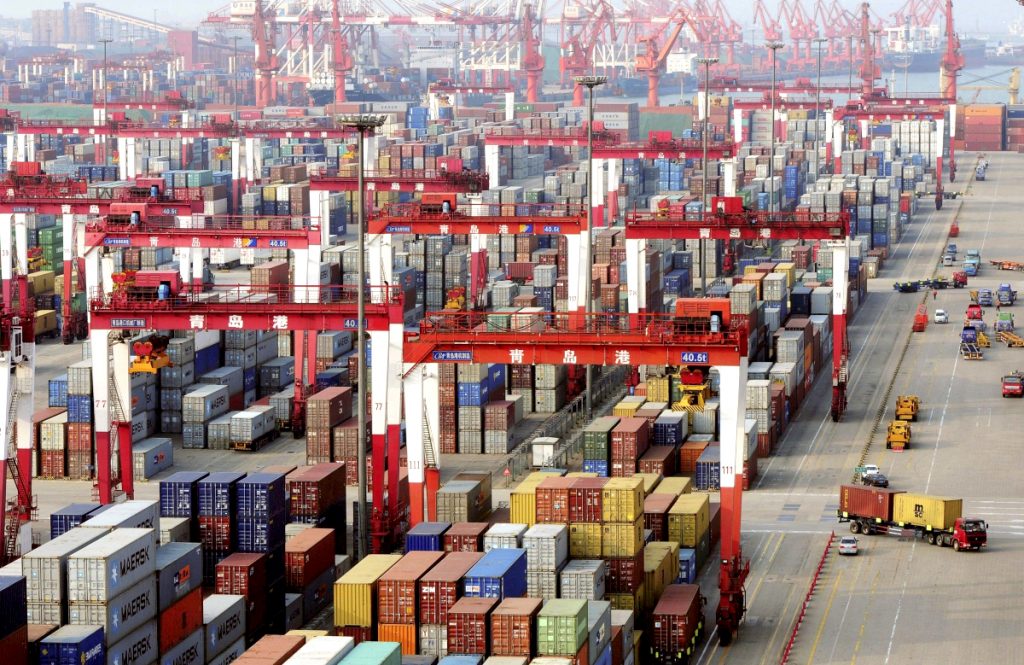
Asia Pacific Transport and Logistics 2014
Available to download todayAbout the Asia Pacific Transport and Logistics 2014 report
Ti has collated its research into the Asia Pacific transport and logistics industry into a single report. It offers detailed insight into some of the fastest growing markets within the region including overviews of a variety of logistics markets, including contract logistics and freight forwarding, from both regional and country-level perspectives, as well as Ti’s bespoke market size data, forecasts and analysis.
In addition, the report includes comprehensive profiles of 22 countries within Asia Pacific. Included within these is an overview of the logistics markets within each country as well as analysis of the infrastructure. In addition, Ti has profiled a mix of both domestic and international logistics providers operating within the region.
This report contains
- An insight into the growth of Asia Pacific’s intra-regional trade
- Market size and growth rates as well as forecasts for the contact logistics, express and freight forwarding sectors in the region, as well as key individual markets
- A comprehensive overview into the transport infrastructure of individual countries
- Analysis of trade patterns in the logistics industry across the region and how new partnerships are developing
- Analysis of logistics providers’ financial performance and strategic developments in the region
This report contains
- An insight into the growth of Asia Pacific’s intra-regional trade
- Market size and growth rates as well as forecasts for the contact logistics, express and freight forwarding sectors in the region, as well as key individual markets
- A comprehensive overview into the transport infrastructure of individual countries
- Analysis of trade patterns in the logistics industry across the region and how new partnerships are developing
- Analysis of logistics providers’ financial performance and strategic developments in the region
Exclusive highlights on logistics markets within Asia
- No longer just the manufacturing centre for the world, Asia Pacific is fast becoming a growing domestic market in its own right
- As market growth gains momentum, considerable investment in infrastructure projects continues throughout the region to meet the growing needs of both domestic, cross-border and international demand.
- By 2017, Asia Pacific is expected to account for over one third of the global contract logistics market.
Exclusive highlights on providers operating within Asia Pacific
- The cumulative market share of Japanese providers in the top 10 has declined, largely because of the yen’s loss of value against the euro in 2013 thanks to ‘Abenomics’.
- Overcapacity in the air and ocean freight industry will continue to result in volatile rates, particularly in the former for fowarders operating in Asia Pacific.
- Logistics providers faces growing competition and will need to set themselves apart from other providers by new services, industry focus or other means.
- Logistics markets and overviews
- Which trade agreements are affecting the development of logistics industries in the region?
- Which countries hold the most market share in the contract logistics, freight forwarding and express markets?
- Country profiles
- What factors are impacting the logistics industry in Asian countries?
- Where are the pain points in each country’s infrastructure?
- Provider profiles
- What are the strengths and weaknesses of providers operating in Asia?
- Which providers have the most service coverage in the region?
- No longer “just” the manufacturing centre for the world, Asia Pacific is now becoming a growing domestic market and as such, international companies are expanding into this region to focus on this trend.
- China is the centre of this “New Asia” and as low based manufacturing exits China, it is moving to such countries as Vietnam, Cambodia, Laos and what is termed “frontier markets” of Myanmar and Bangladesh. This shift in manufacturing has resulted in changes in supply chain requirements.
- These changes in supply chain requirements have helped to further increase intra-Asia trade including the revival of the famed Silk Road route connecting Asia Pacific with the Middle East and East Africa.
- ASEAN Economic Community, a union of ten Southeast Asian countries, is set to become a single economic entity in 2015. Its impact could potentially shift regional economic power away from China and towards Southeast Asia.
- Long dependent on trade with the European Union and the US, Asia Pacific trade patterns are shifting towards other regions such as South America and Africa.
- Ti forecasts that by 2017, Asia Pacific will account for over one third of the global contract logistics market. The overwhelming reason for this is the €11bn of growth that the Chinese contract logistics market is predicted to experience, more than half of Asia Pacific’s total growth over the period.
- Asia Pacific leads the rest of the world with the biggest growth rate for the express and small parcel market. For 2013, the market grew 13.0%. This growth can be attributed to not only manufacturing/exports but also the growing intra-Asia trade as well as the rise in e-commerce.
- From 2013 to 2017, Asia Pacific will likely expand its share in the global freight forwarding market while Europe and North America will see declines. This shift in market share is due to the increasing importance of emerging markets which are expected to develop further over the next few years.
- Considerable investment in infrastructure projects continues throughout the region to meet the needs of both domestic, cross-border and international needs.
- Logistics providers are expanding their presence in Asia Pacific via acquisitions or organic growth. New services such as multi-modal or e-commerce focussed solutions are increasingly being introduced.
David Buckby
Lilith Nagorski
Lilith Nagorski is Head of Ti’s Research Department. Lilith joined the company as a Researcher working primarily on the providers’ area of the GSCi portal and quickly brought improvements to the organisation of the department. As such, Lilith took on the responsibility for managing Ti Reports and now she manages the full team of researchers and analysts. Lilith’s focus is on quality and her goal is to ensure that Ti research products continue to lead the market.
30th September 2014, Bath, UK: Asia Pacific has shed its label as being known simply as a major export region and now offers a variety of opportunities for shippers and logistics providers alike. Indeed, this evolution has been underway for quite a while and the logistics impact of this region is being felt within individual Asian countries, regionally and around the world.
Ti’s 2014 Asia Pacific Transport & Logistics report provides an unparalleled analysis of this region’s evolving transport and logistics requirements by country, logistics provider as well as by logistics market.
While China remains the focal point for much of the region’s logistics activities, infrastructure projects – port and airport expansion, road and rail extension and modernized warehousing – are on the rise in such countries as Vietnam, Indonesia, Malaysia and Myanmar. These country-specific projects are creating attractive options for shippers and logistics providers alike. In addition, these projects are also linking to neighbouring countries and ultimately to China to create a unique but intricate supply chain that further enhances the region’s supply chain capabilities and thus attractiveness for shippers and logistics providers.
As a result of this expanding regional supply chain model, Asia Pacific is expected to account for over one-third of global contract logistics activity by 2017.
Even though its intra-regional supply chain model is growing, the region still remains a vital export region and as such trade lane dependence on Europe and the US is loosening as it looks to other regions such as Africa, the Middle East and South America to expand relations. However, Europe and the US remain important trade partners and as such, logistics providers are expanding transportation options to fulfill demand for these lanes by incorporating multi-modal options such as air/sea and truck/rail solutions. These growing modal options will help increase the use of freight forwarding and as such, Asia-Pacific will see its share of the global freight forwarding market grow from 32.3% in 2013 to 35.9% by 2017.
Logistics opportunities are indeed expanding and as expansion continues so too does this region’s influence on the global supply chain. For example, the highly anticipated ASEAN Economic Community will result in a single economic entity in 2015 also, increasing trade pacts such as the potential Trans-Pacific-Partnership and free trade agreements with individual countries will influence the global and regional trade balance. To understand how is to understand the Asia Pacific transport and logistics market.
For more information about the report please contact Michael Clover.
This report is perfect for
- Consultants and researchers
- Financial analysts
- Strategy directors
- Investors
- Logistics Managers and Directors
- Knowledge Managers
- Government/ NGOs
- All C-level executives

